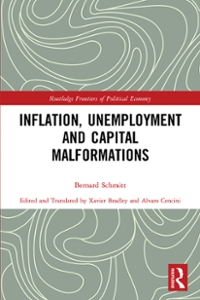Question
Question one. 5. Draw out examples of each of the following indifference curves: imperfect substitutes, perfect substitutes, and perfect complements. 6. Jody enjoys having exactly
Question one.
5. Draw out examples of each of the following indifference curves: imperfect substitutes, perfect substitutes, and perfect complements.
6. Jody enjoys having exactly 1 teaspoon of sugar with every cup of coffee she has. What does this say about her indifference curves between the two goods? What happens to her utility level when she is given 5 teaspoons of sugar with one coffee? (Just an explanation)
7. Jay??s Utility function is given by U(x,z) = 3x10.2 x20.8 and P1=$2 and P2=$4 and his budget is $200.
Write out the Lagrange but don??t solve it
Find the utility maximizing values of x1and x2
8. What does the substitution effect cause a consumer to do if the price of a good increases?
9. What does the income effect cause a consumer to do if the price of a good increases? What else is needed here?
10. What can we say about the substitution and income effects on a decrease in wages? What is an Engel curve and how does it relate here? If leisure is viewed as an inferior good, how would the labor demand curve look?
11. Suppose m=120, p1= 5, and p2=6.
What is the budget equation?
What is the slope of the budget line?
How does the budget set change with the following:
a 20% increase in m
a 2$ decrease in p2
Question 2.
Part 1: True-False questions: Answer all questions. Whenever the question concerns a consumption set, assume that C = R2 +.
1. If the price of either good falls, assuming income if xed, the budget set at the old higher price is contained completely in the budget constraint at the new lower price.
2. A consumer has preferences that are strictly monotone (i.e., "more is better"). Say her income doubles, and the price of good two goes up, but just not by that much. These changes must make the consumer better o.
3. If preferences are not convex, then for any commodity bundle x, the set of commodity bundles that are worse than x can never be a convex set.
4. If preferences are convex and strictly monotonic, the set of consumption bundles that form an indierence curve itself is a convex set.
5. If someone has a utility function U(x,y)= 1000 + 16 min {x1 +x2}, then goods x1 and x2 are perfect complements for that person.
6. If a consumer has convex preferences, then a point of tangency between her indierence curve and her budget line does not necessarily characterize all demand choices.
7. A consumer with preferences u(x1; x2) = x1 + x 3 2 has "convex preferences" (meaning, the weakly preference sets for any consumption bundle are convex sets).
8. A consumer with preferences u(x1; x2) = 20 (ax1 + bx2) 2 +10 has strictly convex preferences (meaning the weakly preferenced sets strictly convex sets).
9. The utility function u(x1; x2) = ln c1 + ln c2 represents the same preferences as some quasilinear utility function.
10. For any optimizing consumer demand choice for xed positive prices and income but does not have strictly convex preferences can never have a unique optimal choice for demand.
11. When preferences are convex, and not strictly convex, many solutions for demand are always possible at every price.
12. When preferences are nonconvex, the set of demands for the consumer will always be at least 2 choices at every price.
13. When preferences are Leontief, the consumer always ends up eating all of one good.
14. Let the utility function be u(c) = c 2 1 + c2: These preferences are convex, but not strictly convex.
15. The preferences u(c1; c2) = c a 1 c b 2 for a > 0; b > 0 are strictly convex.
Part c.
Answer the following.


Step by Step Solution
There are 3 Steps involved in it
Step: 1

Get Instant Access to Expert-Tailored Solutions
See step-by-step solutions with expert insights and AI powered tools for academic success
Step: 2

Step: 3

Ace Your Homework with AI
Get the answers you need in no time with our AI-driven, step-by-step assistance
Get Started


